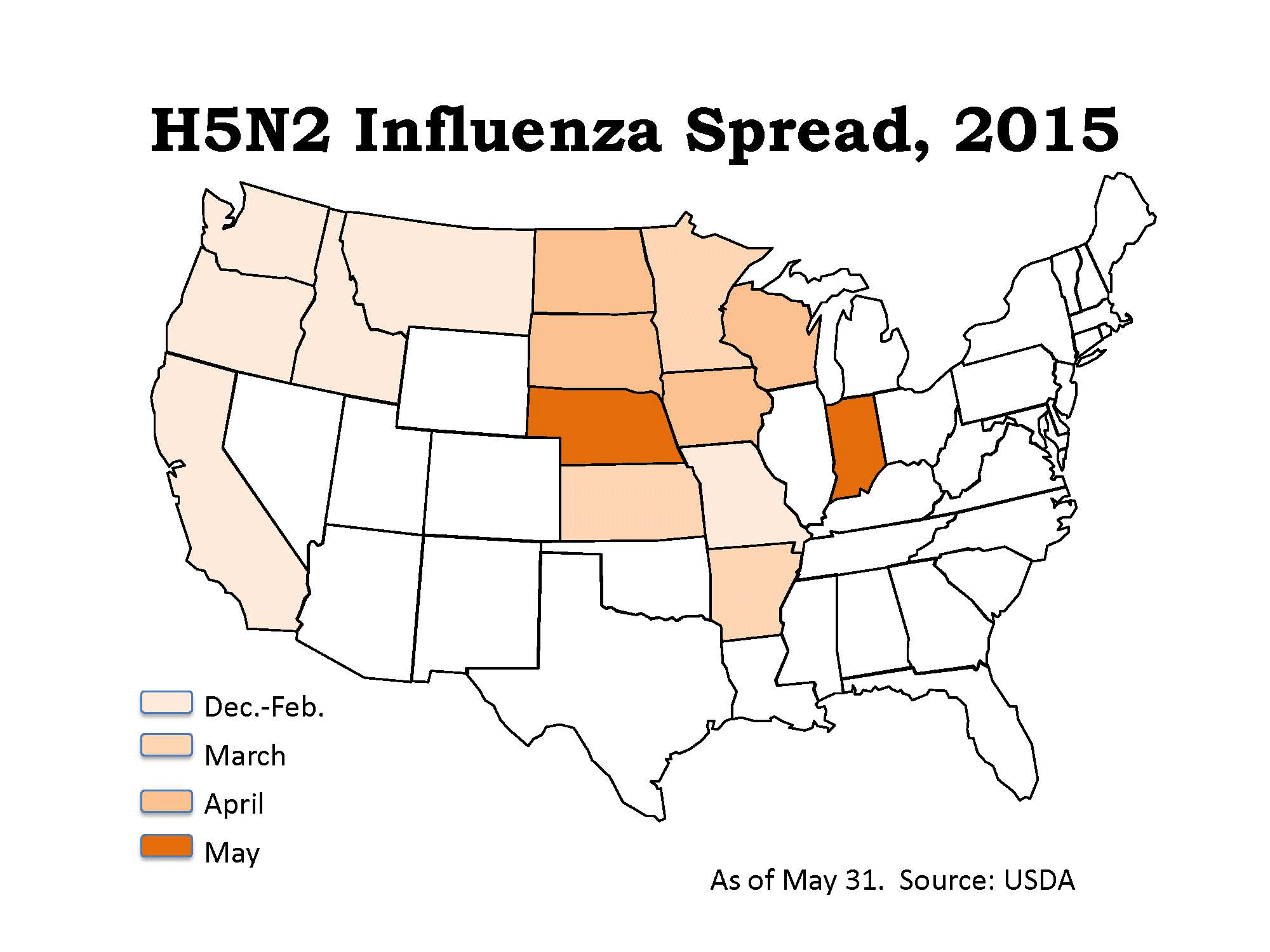Avian flu raises questions about feed demand
CHALLENGES FACING U.S. FARMERS
SINCE MID-DECEMBER, the outbreak of H5N2 avian flu has spread to 15 U.S. states and more than 40 million birds have died or been culled in efforts to halt the disease’s spread.

Despite hopes that warmer, sunnier weather would bring an end to the epidemic, new cases were still being identified as of the end of May.
How bird losses will affect feed demand for corn and soy meal is still uncertain. As of May 28, Rich Nelson, chief strategist for Allendale, Inc., put lost corn demand at 30 to 35 million bushels, or less than three per cent of the 1.24 billion bushels that normally go into U.S. poultry production. For soybean meal, the toll is estimated at 710,000 tons. However, May estimates by the U.S. Department of Agriculture (USDA) project a 50 million bushel increase in corn use for livestock feed, despite the losses in the poultry sector. As with corn, the USDA’s May outlook report sees domestic demand for soybean meal on the increase from 29.5 to 30.9 million short tons, this market year. That suggests avian flu will have a minimal effect on world corn markets, but those estimates assume that the epidemic will wind down so farms can rebuild their flocks, a process estimated to take six months or less.
Questions are being raised, however, about how the disease has spread, and farms are unlikely to begin restocking until growers are confident they can avoid a repeat outbreak. Nelson estimates that a second round of H5N2 in the fall could take lost corn sales as high as 45 million bushels, and the effect on corn markets could be much greater if infections persist into 2016.
The first identified H5N2 cases were in wild birds in Washington, Oregon, and Idaho, supporting the theory that the disease was being carried by migratory birds. The next cases were in back yard flocks again in the Pacific Northwest, plus Missouri. The first infections in commercial flocks came in California in January and February. In March, the outbreak picked up steam, hitting commercial turkey operations in Minnesota, Arkansas, and the Dakotas and back yard flocks in Kansas and Montana. Wisconsin and Iowa had their first cases in mid-April.
Iowa, the nation’s leading producer of eggs, has now tallied 67 affected farms with more than 29 million birds dead or destroyed – many at large scale farms with sophisticated procedures to prevent contact with wild birds. As a result, several alternative means of transmission have been suggested, including wind-born spread or spread on the feet and fur of rodents.
Significantly, H5N2 has not yet affected U.S. broiler production which is concentrated in the southern states (Georgia, Alabama, Arkansas, North Carolina, and Mississippi) and which consumes more feed than the layer and turkey industries.
Meanwhile, local corn and soybean meal prices have weakened in areas most affected by the outbreak. In Iowa, for example, affected farms have not only halted feed purchases; in a number of cases big poultry operations are selling their stocks of corn, potentially lowering local prices by six per cent or more. •





















